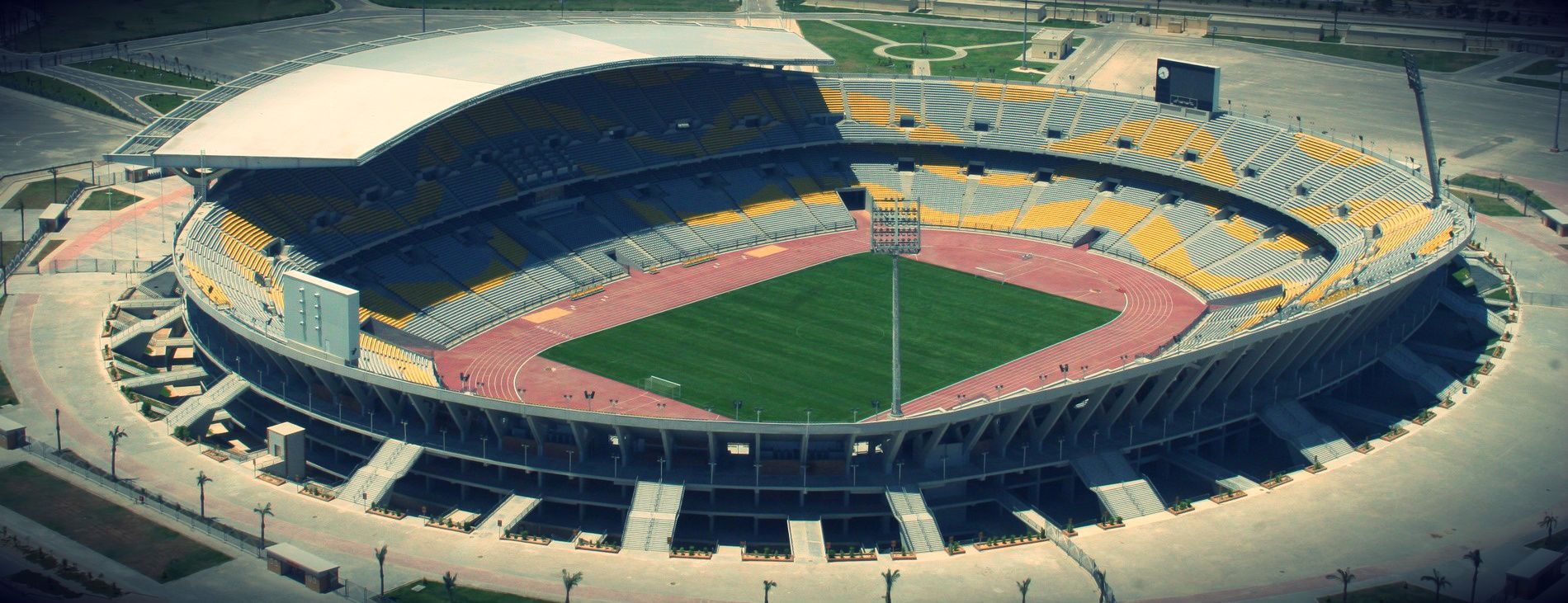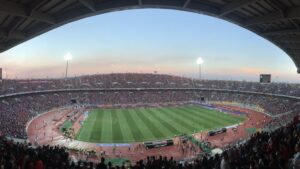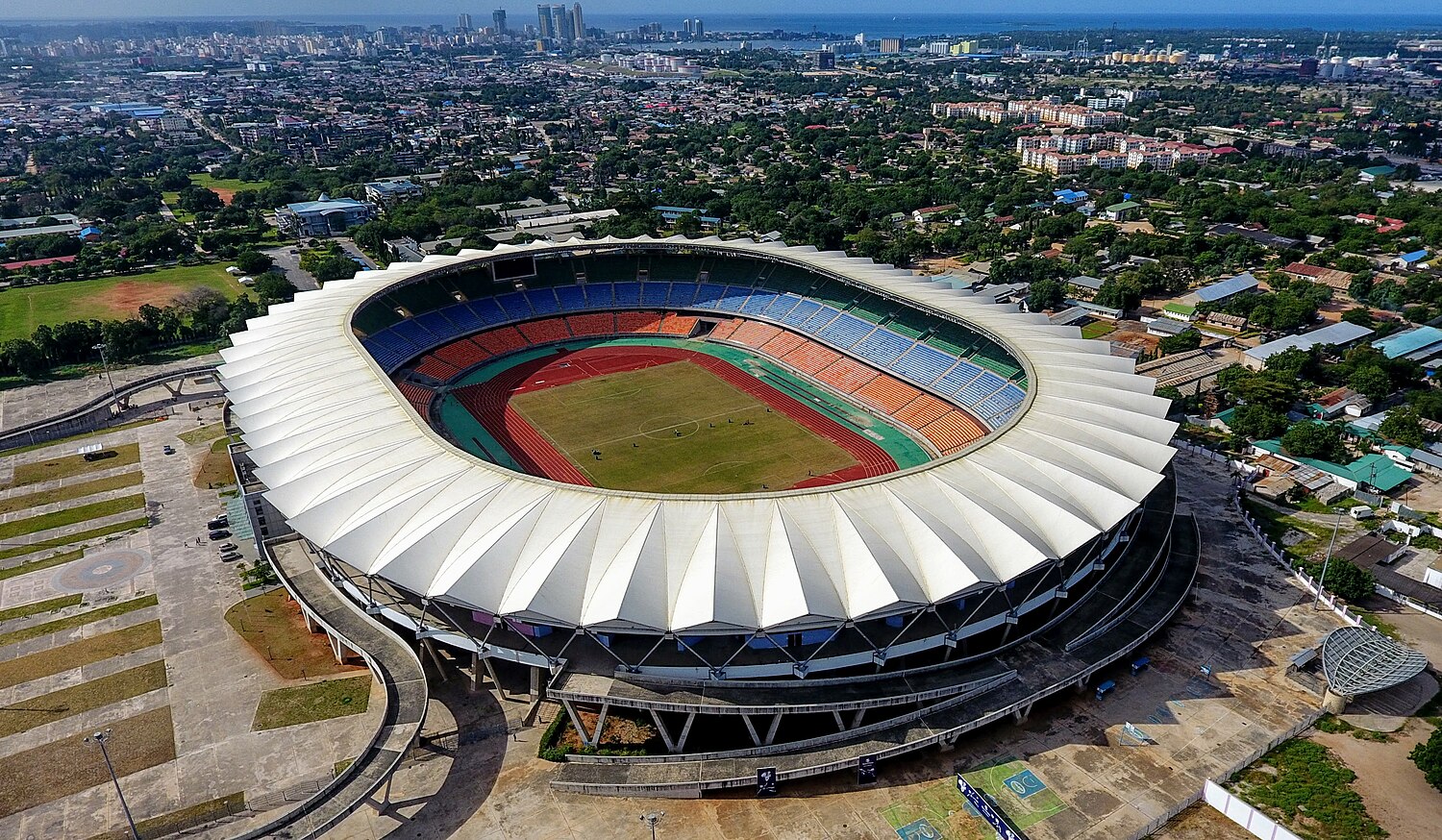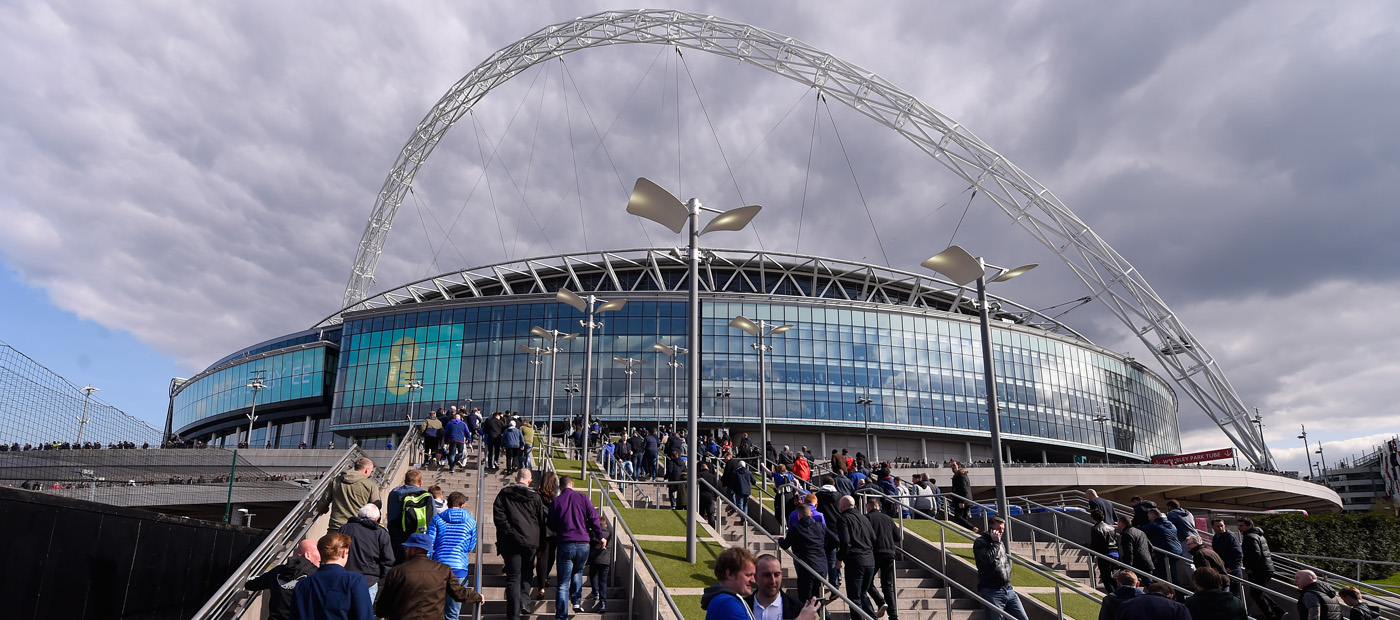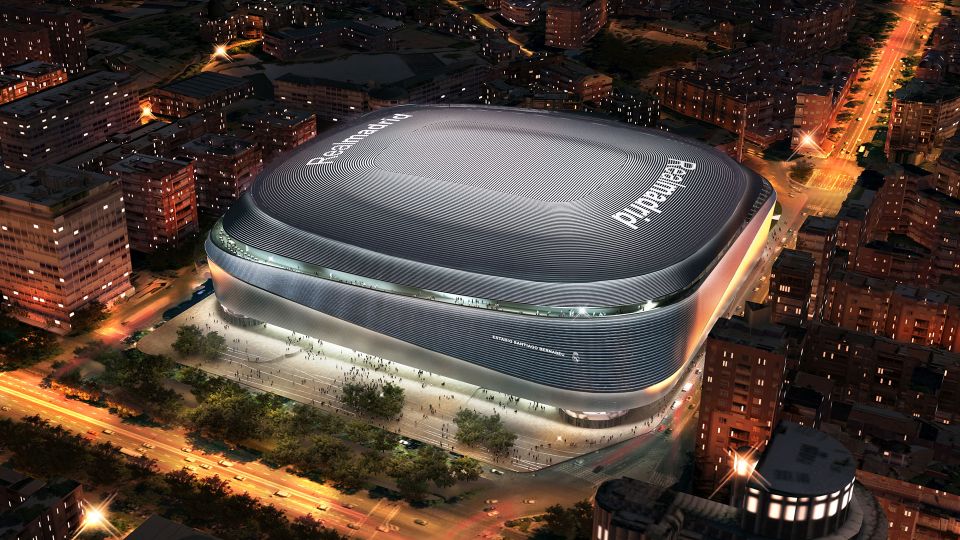Borg El Arab Stadium, also known as the Egyptian Army Stadium or El Geish Stadium – Alexandria, is a monumental sports venue in Amreya, a Mediterranean resort area just 25 kilometers west of Alexandria, Egypt. With a seating capacity of 86,000, it is the second-largest stadium in Egypt and the third-largest in Africa. This all-seater stadium is also ranked among the world’s largest football venues. Its construction began in 2005 and was completed in 2009, and it is located on the Cairo-Alexandria desert highway, just 10 kilometers from Borg El Arab Airport and 15 kilometers from downtown Alexandria.
Architectural Design
Capacity and Structure
The stadium’s design emphasizes scale and functionality. It encompasses an expansive area of 145 feddans (609,000 square meters) surrounded by a 3-kilometer-long fence. An internal road network spanning 6 kilometers allows for smooth transportation within the complex. The venue offers ample parking, with space for 5,000 cars and 200 buses, as well as a dedicated airstrip for helicopter landings.
The seating arrangement accommodates 86,000 spectators across the upper and lower levels. The VIP section has 22 seats, while the terrace can hold 300 spectators. A unique feature is the metal sunshade that covers 35% of the stadium’s total seating capacity, providing comfort during Egypt’s scorching summers. The grandstand offers an exclusive area for VIPs, media, and other distinguished guests.
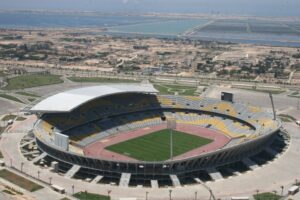
Entrances and Access
Accessibility is a key aspect of the stadium’s design. The 3.5-kilometer-long outer fence features 10 gates and 80 shops covering 4,000 square meters. Inside, the main stadium is enclosed by a 1.2-kilometer-long inner fence with 17 gates, allowing for a controlled flow of spectators. There are 136 electronic machines designed to accommodate 800 spectators per minute. Additional entrances are provided for VIPs, disabled persons, and those with special needs.
With 76 staircases, the stadium ensures easy movement. These staircases are strategically divided, with 22 leading to the upper stands, 18 to special cabins, and 36 to the lower stands. The stadium also includes 8 elevators, with specific ones for VIPs, journalists, and goods.
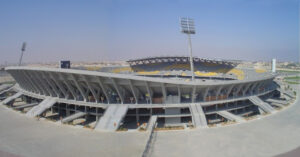
The Playing Field
The pitch itself is meticulously aligned with FIFA standards. It measures 105 by 70 meters, with a geographical orientation of 12 degrees northwest to align with wind patterns, reducing obstructions during gameplay. The stadium is equipped with 8 running track lanes, a water block for steeplechase, and sand pits for long and triple jumps. The lighting system features twin light towers positioned at the north-eastern and south-eastern stands, and additional lights along the sunshade. The venue also has two results panels and 13 camera positions for broadcasting.
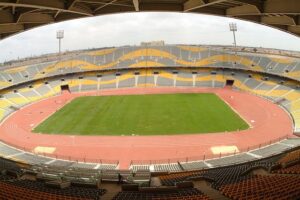
Facilities and Services
Borg El Arab Stadium offers a comprehensive range of facilities for players, spectators, and staff. It features four locker rooms with restrooms and showers for players, and 32 restaurants and 68 restrooms for spectators. Among these, there are 386 toilets, with 337 for men, 43 for women, and 6 for people with special needs. Additionally, 25% of the stadium is air-conditioned.
The stadium includes a 200-bed hotel designed for players and officials, with air conditioning, a conference hall, cafeteria, restaurant, swimming pool, gymnasium, and elevators. There is also an administrative building and a housing center for the stadium’s workers.
The History of Borg El Arab Stadium
Construction and Inception
Borg El Arab Stadium was conceived as part of Egypt’s ambitious plan to host the 2010 FIFA World Cup. Although Egypt’s bid was ultimately unsuccessful, the stadium emerged as a key venue for Egyptian football. Following its completion, it became the home ground for the Egyptian national football team, sharing this role with Cairo International Stadium. In the years that followed, the stadium welcomed other prominent Egyptian teams, including Smouha, Al Ahly, and Al Ittihad, each finding a place within its spacious confines.
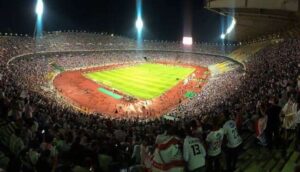
Opening and Early Events
The grand opening of Borg El Arab Stadium took place in 2009, marking a significant milestone for Egyptian sports. That year, the stadium was chosen to host the opening match and opening ceremony of the FIFA U-20 World Cup. The first game featured Egypt and Trinidad and Tobago, drawing a large and enthusiastic crowd. High-ranking FIFA officials, including then-President Sepp Blatter, were in attendance, and they couldn’t help but praise the stadium’s grandeur and innovative design.
With its impressive capacity and state-of-the-art facilities, Borg El Arab Stadium quickly established itself as a premier venue for a wide range of events. It became a preferred location for major football matches, but its appeal extended far beyond the pitch. The stadium’s strategic location, just west of Alexandria and easily accessible from the Cairo-Alexandria highway, made it an ideal spot for concerts, large-scale gatherings, and other significant events. Its versatility and size continued to attract attention, both within Egypt and from the international sports community.
